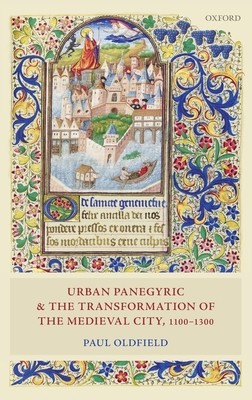
- We will send in 10–14 business days.
- Author: Paul Oldfield
- Publisher: Oxford University Press, USA
- ISBN-10: 0198717733
- ISBN-13: 9780198717737
- Format: 15.8 x 23.6 x 2.3 cm, hardcover
- Language: English
- SAVE -10% with code: EXTRA
Urban Panegyric and the Transformation of the Medieval City, 1100-1300 (e-book) (used book) | bookbook.eu
Reviews
Description
This study offers the first extensive analysis of the function and significance of urban panegyric in the Central Middle Ages, a flexible literary genre which enjoyed a marked and renewed popularity in the period 1100 to 1300. In doing so, it connects the production of urban panegyric to major underlying transformations in the medieval city and explores praise of cities primarily in England, Flanders, France, Germany, Iberia, and Italy (including the South and Sicily). The volume demonstrates how laudatory ideas on the city appeared in extremely diverse textual formats which had the potential to interact with a wide audience via multiple textual and material sources. When contextualized within the developments of the twelfth and thirteenth centuries these ideas could reflect more than formulaic, rhetorical outputs for an educated elite, they were instead integral to the process of urbanisation. In Urban Panegyric and the Transformation of the Medieval City, 1100-1300, Paul
Oldfield assesses the generation of ideas on the Holy City, on counter-narratives associated with the Evil City, on the inter-relationship between the City and abundance (primarily through discourses on commercial productivity, hinterlands and population size), on landscapes and sites of power, and on knowledge generation and the construction of urban histories.
EXTRA 10 % discount with code: EXTRA
The promotion ends in 18d.08:34:13
The discount code is valid when purchasing from 10 €. Discounts do not stack.
- Author: Paul Oldfield
- Publisher: Oxford University Press, USA
- ISBN-10: 0198717733
- ISBN-13: 9780198717737
- Format: 15.8 x 23.6 x 2.3 cm, hardcover
- Language: English English
This study offers the first extensive analysis of the function and significance of urban panegyric in the Central Middle Ages, a flexible literary genre which enjoyed a marked and renewed popularity in the period 1100 to 1300. In doing so, it connects the production of urban panegyric to major underlying transformations in the medieval city and explores praise of cities primarily in England, Flanders, France, Germany, Iberia, and Italy (including the South and Sicily). The volume demonstrates how laudatory ideas on the city appeared in extremely diverse textual formats which had the potential to interact with a wide audience via multiple textual and material sources. When contextualized within the developments of the twelfth and thirteenth centuries these ideas could reflect more than formulaic, rhetorical outputs for an educated elite, they were instead integral to the process of urbanisation. In Urban Panegyric and the Transformation of the Medieval City, 1100-1300, Paul
Oldfield assesses the generation of ideas on the Holy City, on counter-narratives associated with the Evil City, on the inter-relationship between the City and abundance (primarily through discourses on commercial productivity, hinterlands and population size), on landscapes and sites of power, and on knowledge generation and the construction of urban histories.


Reviews